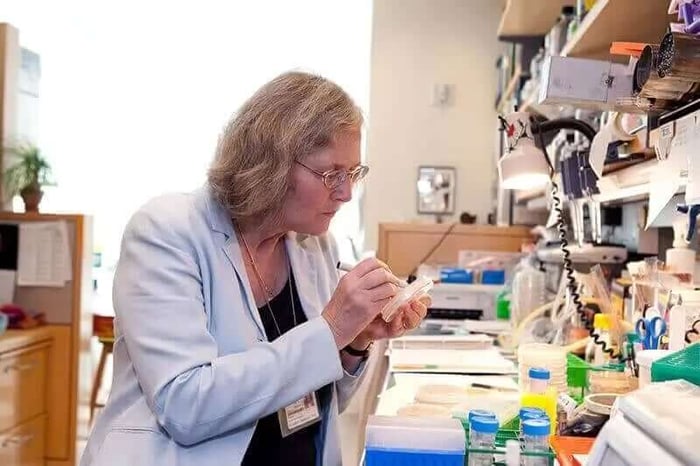Molecular Timers: The Revolutionary Discovery Transforming Our Understanding of Human Cells and Cancer
Imagine tiny biological clocks ticking away inside every cell of your body, controlling how your DNA changes over time. Scientists have made a groundbreaking discovery about molecular timers that fundamentally reshape our understanding of cellular aging and cancer development. This remarkable finding opens doors to personalized medicine approaches that could predict cancer progression and optimize treatment strategies for millions of patients worldwide.
What Are Molecular Timers and Why Do They Matter?
Molecular timers are clock-like mutational processes that accumulate genetic changes in human cells at predictable rates throughout our lifetime. Think of them as biological metronomes, keeping steady time as they introduce mutations into our DNA year after year. This discovery answers fundamental questions about how our cells age and why some develop into cancer while others remain healthy.
The significance of understanding these cellular clocks extends far beyond academic curiosity. By decoding how molecular timers work, researchers can potentially:
- Predict cancer development before symptoms appear
- Determine how quickly tumors might spread
- Customize treatment plans based on individual mutation rates
- Understand the biological basis of aging at the cellular level
- Develop targeted therapies that account for these timing mechanisms
The Groundbreaking Research Behind Molecular Timer Discovery
In a landmark study published in Nature Genetics, researchers analyzed an unprecedented 10,250 cancer genomes spanning 36 different cancer types. This massive undertaking revealed something extraordinary: among 33 distinct mutational signatures found in cancer cells, only two exhibited the characteristics of molecular timers.

These two clock-like processes, designated as Signature 1 and Signature 5, showed a direct correlation between the number of mutations in cancer samples and the patient's age at diagnosis. This correlation provided the first concrete evidence that molecular timers operate continuously throughout human life, accumulating mutations at steady, predictable rates.
Understanding Signature 1: The Cell Division Clock
Signature 1 represents one of the two identified molecular timers, and its behavior provides fascinating insights into cellular aging. This mutational process appears most active in cells with high turnover rates, particularly in the digestive system. The mechanism involves methylated cytosine bases spontaneously converting to thymine, creating genetic mismatches that become permanent mutations when cells divide.
Key characteristics of Signature 1 include:
- Higher mutation rates in rapidly dividing cells
- Strong correlation with cell division frequency
- Particularly active in colorectal and gut tissues
- Predictable accumulation patterns across different tissue types
Decoding Signature 5: The Mystery Clock
While Signature 1's mechanism is relatively well understood, Signature 5 remains more enigmatic. This second type of molecular timer operates independently of cell division rates, suggesting a fundamentally different biological process at work. Unlike its counterpart, Signature 5 maintains consistent mutation rates regardless of how frequently cells divide, pointing to mechanisms beyond simple replication errors.
How Molecular Timers Transform Cancer Treatment
The discovery of molecular timers promises to revolutionize oncology by providing clinicians with powerful new tools for patient care. Dr. Julian Sale, a leading researcher in the field, explains that comparing primary tumor genomes with metastases could reveal precise timelines of cancer spread. This temporal information enables doctors to make more informed decisions about treatment urgency and approach.

Consider Sarah, a 52-year-old breast cancer patient. By analyzing the molecular timer signatures in her tumor cells, oncologists could predict:
- How quickly her cancer might metastasize
- The likelihood of developing drug resistance
- Optimal timing for different treatment interventions
- Personalized monitoring schedules based on mutation rates
The Science of Cellular Aging and Molecular Timers
Beyond cancer applications, molecular timers offer profound insights into the aging process itself. These cellular clocks tick away in virtually every cell type throughout the human body, accumulating mutations that may contribute to age-related diseases and dysfunction. Understanding these mechanisms opens possibilities for interventions that could slow cellular aging or mitigate its effects.
Dr. Ludmil Alexandrov, an Oppenheimer Fellow at Los Alamos National Laboratory, emphasizes the dual nature of these discoveries: "How fast these clocks tick in a cell may well determine both the aging of this cell and the likelihood for it to become cancerous." This connection between molecular timers and cellular fate suggests new avenues for preventive medicine and longevity research.
Variation Across Cell Types
One of the most intriguing aspects of molecular timers is their variable rates across different tissue types. Research shows that:
| Cell Type | Signature 1 Rate | Signature 5 Rate | Clinical Implications |
|---|---|---|---|
| Colorectal | High | Moderate | Earlier screening recommended |
| Lung | Moderate | Variable | Environmental factors influential |
| Brain | Low | Low | Different monitoring approach needed |
| Liver | High | High | Frequent surveillance beneficial |
Future Directions in Molecular Timer Research
The discovery of molecular timers marks just the beginning of a new era in cellular biology and medicine. Principal Sir Michael Stratton, Director of the Wellcome Trust Sanger Institute, outlines ambitious plans for future research: "Over the next few years, we hope to perform large-scale sequencing directly of all types of normal cells to refine these clock-like mutation rates."
Upcoming research priorities include:
- Mapping molecular timer rates in healthy cells across all tissue types
- Identifying environmental factors that influence timer speeds
- Developing interventions to modulate mutation rates
- Creating predictive models for individual cancer risk
- Exploring connections between timers and other age-related diseases
Practical Applications for Patients Today
While research into molecular timers continues advancing, patients can already benefit from this knowledge. Healthcare providers increasingly consider these cellular clocks when:
- Designing personalized screening schedules
- Selecting optimal treatment timing
- Monitoring cancer recurrence risk
- Advising on lifestyle modifications that may influence mutation rates
John, a 45-year-old with a family history of colon cancer, learned about molecular timers during a consultation with his gastroenterologist. Understanding that colorectal cells have particularly active Signature 1 timers motivated him to begin earlier screening and adopt dietary changes shown to support cellular health. This proactive approach, informed by molecular timer science, exemplifies how patients can leverage this knowledge for better health outcomes.
The Promise of Precision Medicine
The identification of molecular timers represents a paradigm shift toward truly personalized medicine. By understanding each individual's unique mutation rates and patterns, clinicians can move beyond one-size-fits-all approaches to create tailored health strategies. This precision extends from cancer treatment to preventive care, offering hope for more effective interventions across the healthcare spectrum.

The implications stretch even further when considering combination therapies. Knowledge of molecular timer rates could help oncologists:
- Time chemotherapy cycles for maximum effectiveness
- Predict windows of vulnerability in cancer cells
- Coordinate multiple treatments based on mutation accumulation
- Minimize side effects by optimizing dosing schedules
Breaking Down the Complexity: How Molecular Timers Work
To truly appreciate the revolutionary nature of molecular timers, it helps to understand their fundamental mechanisms. These cellular clocks operate through distinct biochemical processes that introduce mutations at predictable rates. The beauty lies in their consistency - like a metronome keeping perfect time, these timers maintain their pace regardless of external circumstances.
The research team's analysis of 7,329,860 somatic mutations provided an unprecedented view into these processes. By essentially "rewinding the clock," scientists could trace mutation patterns back through time, revealing which changes occurred before cancerous transformation. This temporal mapping offers invaluable insights into cancer development and progression.
The Two-Clock System
The existence of two distinct molecular timers operating simultaneously adds another layer of complexity and opportunity. These dual clocks function independently, each contributing its own pattern of mutations over time. Understanding their interplay could unlock new therapeutic targets and diagnostic markers.
Consider how these timers work together:
- Signature 1 ticks faster in dividing cells, accumulating replication-associated mutations
- Signature 5 maintains steady rates regardless of division, suggesting metabolic origins
- Combined effects create unique mutational landscapes in different tissues
- Individual variations in timer rates may explain differential disease susceptibility
Empowering Patients Through Molecular Timer Knowledge
Understanding molecular timers empowers patients to take active roles in their health management. This knowledge transforms abstract genetic concepts into actionable insights. Patients equipped with information about their cellular clocks can make informed decisions about screening, lifestyle choices, and treatment options.
Maria, a 38-year-old teacher, discovered through genetic counseling that her family carries variants associated with accelerated molecular timer rates. Rather than feeling helpless, she found empowerment through understanding. She now follows a personalized health plan that includes:
- Enhanced screening protocols tailored to her risk profile
- Dietary modifications shown to support cellular health
- Regular exercise proven to influence mutation rates positively
- Stress management techniques that may impact cellular aging
The Global Impact of Molecular Timer Discovery
The implications of molecular timer research extend far beyond individual patient care. This discovery promises to reshape public health strategies worldwide. By understanding population-level variations in timer rates, health systems can:
- Optimize screening programs based on regional mutation patterns
- Allocate resources more effectively for cancer prevention
- Develop targeted interventions for high-risk populations
- Create evidence-based guidelines incorporating timer knowledge
Countries with advanced genomic infrastructure are already beginning to integrate molecular timer concepts into their healthcare planning. This proactive approach could save countless lives through earlier detection and more precise interventions.
Looking Ahead: The Future of Molecular Timer Science
As we stand at the threshold of this new era in cellular biology, the possibilities seem limitless. Molecular timers have already transformed our understanding of cancer and aging, but their full potential remains untapped. Ongoing research promises even more revolutionary discoveries in the coming years.
Scientists envision a future where:
- Routine health checks include molecular timer assessments
- Preventive treatments target specific timer mechanisms
- Age-related diseases are predicted and prevented before onset
- Personalized longevity plans optimize individual cellular health
The journey from discovering molecular timers to fully harnessing their potential will require continued research, innovation, and collaboration. Yet the foundation laid by this groundbreaking work provides solid ground for optimism about the future of human health.
Frequently Asked Questions About Molecular Timers
What exactly are molecular timers in human cells?
Molecular timers are biological processes that introduce mutations into our DNA at constant, predictable rates throughout our lifetime. These clock-like mechanisms operate in virtually every cell type in the human body, accumulating genetic changes that contribute to aging and cancer development. Scientists have identified two main types - Signature 1 and Signature 5 - each with distinct characteristics and rates of mutation accumulation.
How do molecular timers affect cancer development?
Molecular timers play a crucial role in cancer development by continuously introducing mutations into cellular DNA. As these mutations accumulate over time, they increase the likelihood of cancerous transformations. Understanding the rate at which these timers tick in different cell types helps predict cancer risk and enables earlier detection strategies. This knowledge also allows doctors to estimate how quickly existing cancers might progress or develop drug resistance.
Can molecular timer rates be influenced by lifestyle choices?
While molecular timers operate at baseline rates determined by our biology, emerging research suggests that certain lifestyle factors may influence their speed. Healthy diet, regular exercise, stress management, and avoiding environmental toxins may help maintain optimal timer function. However, more research is needed to fully understand which interventions can effectively modulate these cellular clocks and to what extent.
How are molecular timers detected and measured?
Scientists detect molecular timers by analyzing DNA sequences from thousands of cell samples and identifying patterns of mutations that accumulate at steady rates over time. Advanced genomic sequencing technology allows researchers to count specific types of mutations and correlate them with patient age. This creates a molecular clock readout that reveals how fast mutations are accumulating in different tissues.
What's the difference between Signature 1 and Signature 5 molecular timers?
The two identified molecular timers operate through different mechanisms. Signature 1 correlates with cell division rates and is most active in rapidly dividing tissues like the gut. It works through spontaneous chemical changes in DNA bases. Signature 5, however, maintains steady rates regardless of cell division, suggesting a different underlying process that scientists are still working to understand. Both contribute to overall mutation accumulation but through distinct pathways.
How will molecular timer knowledge change medical treatment?
Understanding molecular timers revolutionizes medical treatment by enabling truly personalized care. Doctors can predict disease progression, optimize treatment timing, and customize screening schedules based on individual timer rates. This knowledge helps determine when cancers might become metastatic or develop drug resistance, allowing proactive adjustments to treatment plans. Future applications may include preventive interventions targeted at slowing timer rates in high-risk individuals.
Are molecular timer tests available for patients now?
While molecular timer research is advancing rapidly, comprehensive testing for individual timer rates is not yet widely available in clinical settings. However, some specialized cancer centers are beginning to incorporate timer analysis into research protocols and experimental treatments. As technology improves and costs decrease, these tests are expected to become standard components of personalized medicine within the next decade.
Do molecular timers explain why cancer risk increases with age?
Yes, molecular timers provide a mechanistic explanation for age-related cancer risk. These cellular clocks continuously accumulate mutations throughout life, meaning older individuals have had more time for potentially harmful mutations to build up. This cumulative effect explains why cancer incidence rises dramatically with age. Understanding timer rates helps predict individual risk trajectories and could lead to age-adjusted prevention strategies.
Can molecular timers help predict lifespan or healthy aging?
Molecular timers offer promising insights into biological aging processes, though predicting individual lifespan remains complex. These cellular clocks contribute to overall aging by accumulating mutations that may impair cellular function over time. While timer rates alone cannot predict lifespan, they provide valuable data about cellular health and aging speed. Combined with other biomarkers, timer analysis may eventually contribute to comprehensive longevity assessments.
What's next for molecular timer research?
The future of molecular timer research focuses on mapping timer rates in healthy cells across all tissue types, understanding environmental influences on timer speed, and developing interventions to modulate these rates. Scientists aim to create comprehensive databases of timer patterns, develop drugs targeting timer mechanisms, and integrate timer knowledge into routine medical care. This research promises to unlock new approaches to preventing age-related diseases and optimizing human healthspan.
References:







